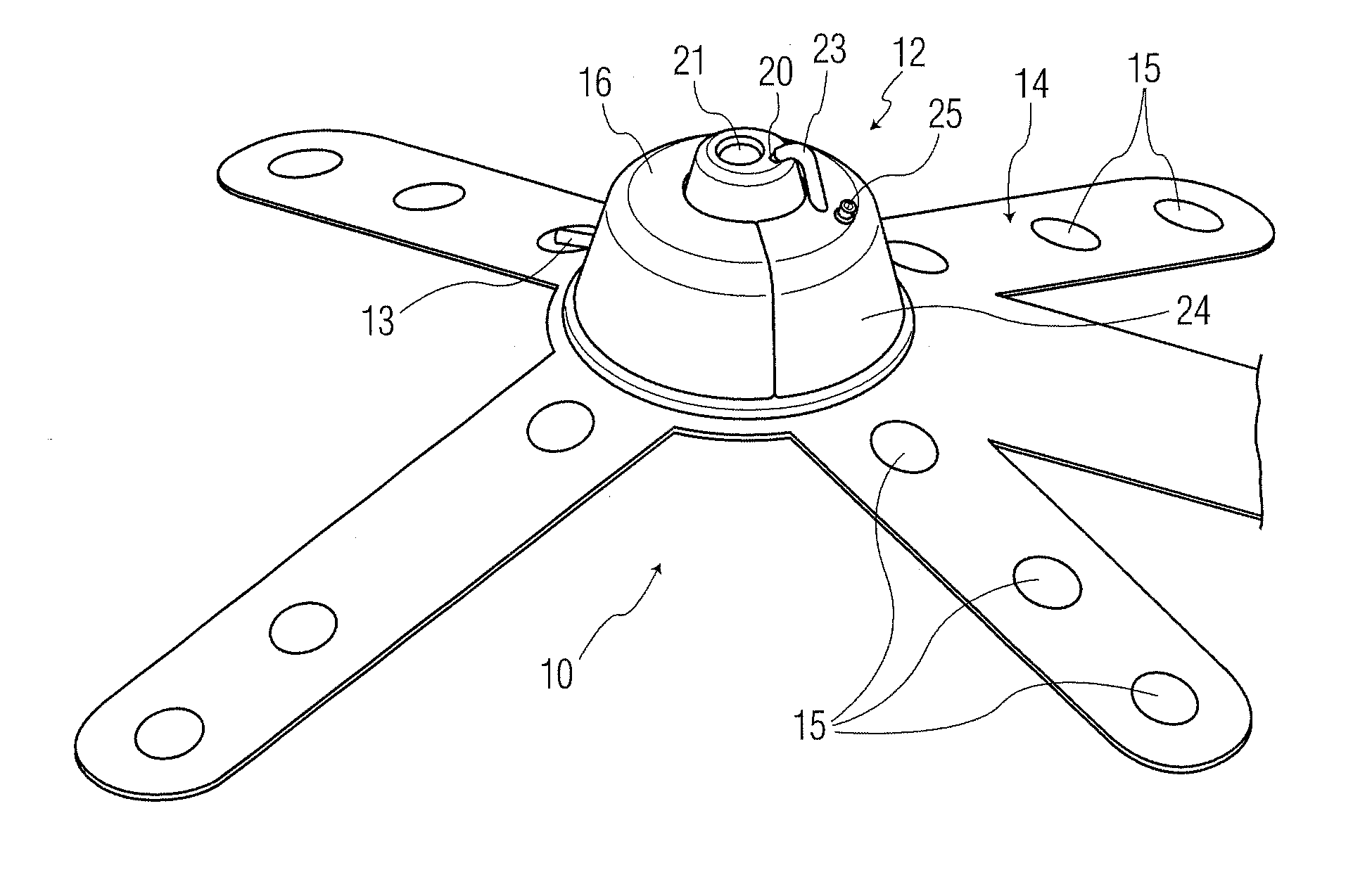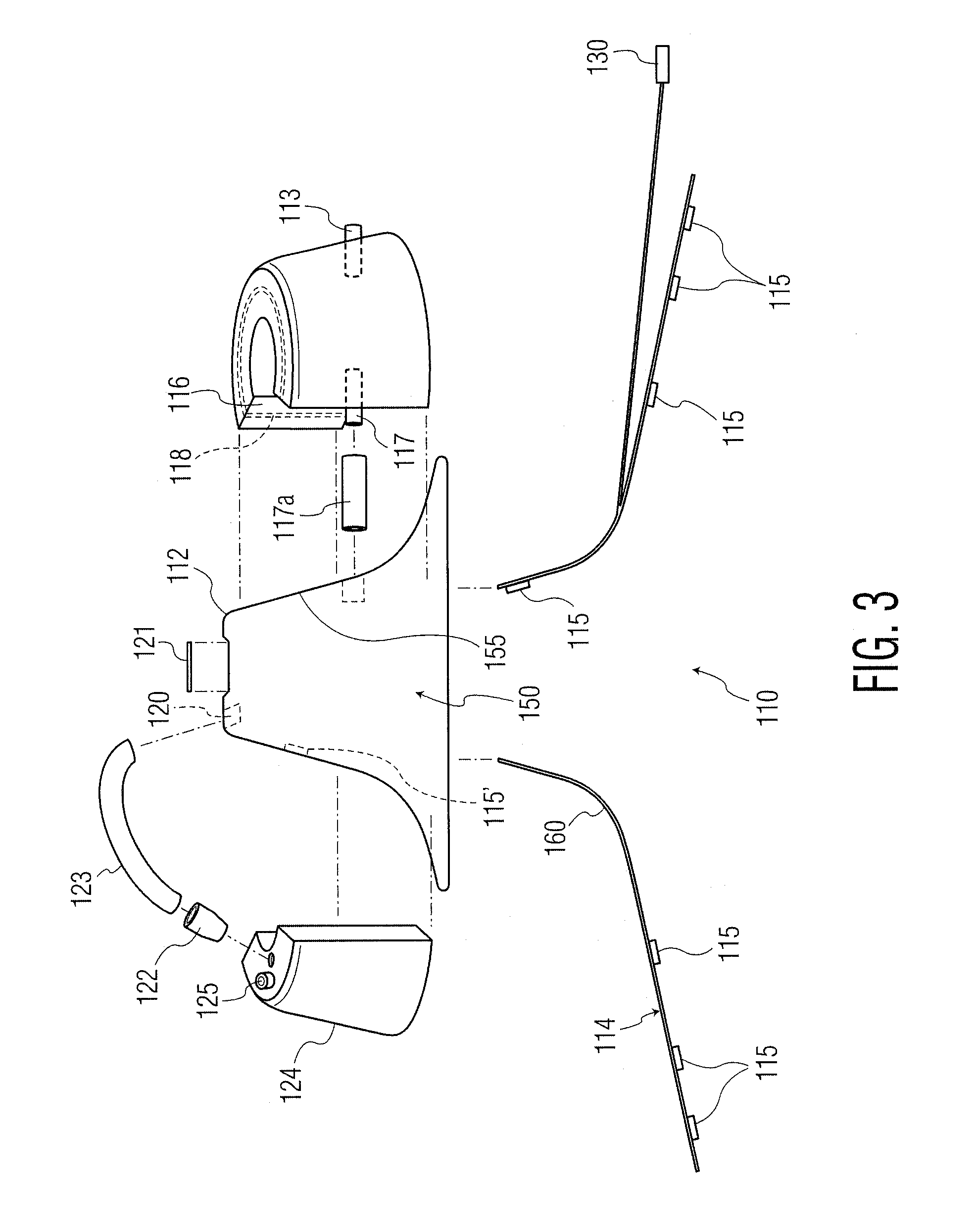Skin surface electrodes
a technology of skin surface electrodes and electrodes, which is applied in the field of measuring or detecting electrical signals, can solve the problems of high cancer mortality rate, difficult to achieve the effect of reducing air pressure and reducing air pressur
- Summary
- Abstract
- Description
- Claims
- Application Information
AI Technical Summary
Benefits of technology
Problems solved by technology
Method used
Image
Examples
first embodiment
[0022]The present invention overcomes deficiencies associated with prior devices. In a first embodiment, as exemplified in FIG. 1, the apparatus 10 of the present invention includes generally a cup 12 and an electrical support structure 14. Apparatus 10 may be positioned on an epithelial tissue, such as the skin and / or nipple of a breast, and may be used to send and / or receive electrical signals through the epithelial tissue to measure, for example, density, of subepithelial tissue which may be tissue under the surface tissue (e.g., skin, nipple surface, etc.) and may include breast tissue, epithelial ductal tissue, deep tissue, and the like.
[0023]As illustrated in FIG. 2, the cup 12 may have an open volume 50 which is bounded by the inner surface 55 of cup 12. The cup 12 may have any required shape, such as conical, half spherical, or the like, and may further have a domed tip (which may assist in collecting any remaining air within volume 50 during the process of reducing air pres...
second embodiment
[0030]FIG. 3 illustrates an exploded view of apparatus 110 which may include cup 112, reservoir 116, a plurality of sensors 115 (as part of electrical support structure 114 or off the support structure 114, as with sensor 115′), exhaust / overflow reservoir 124 and at least two ports—fill port 117 and exhaust port 120. In this embodiment, the reservoirs are illustrated to be separate structures from the cup 112, and as such the reservoirs may be positioned anywhere relative to the surface 55 of cup 12. In FIG. 3, the reservoirs 116 and 124 may be connected by passageways 117a and 123, respectively. The exemplary embodiment of FIG. 3 may also include such elements as puncture seal 121, one-way valve 122, air exit port 125, reservoir liner diaphragm 118, pump port 113 (and pump, not shown), and the like. The surface 155 of cup 112, bounding volume 150, may further include a covering of at least a portion of surface 155 of adhesive foam 160. Adhesive foam 160 may be any material which pr...
PUM
 Login to View More
Login to View More Abstract
Description
Claims
Application Information
 Login to View More
Login to View More - R&D
- Intellectual Property
- Life Sciences
- Materials
- Tech Scout
- Unparalleled Data Quality
- Higher Quality Content
- 60% Fewer Hallucinations
Browse by: Latest US Patents, China's latest patents, Technical Efficacy Thesaurus, Application Domain, Technology Topic, Popular Technical Reports.
© 2025 PatSnap. All rights reserved.Legal|Privacy policy|Modern Slavery Act Transparency Statement|Sitemap|About US| Contact US: help@patsnap.com



